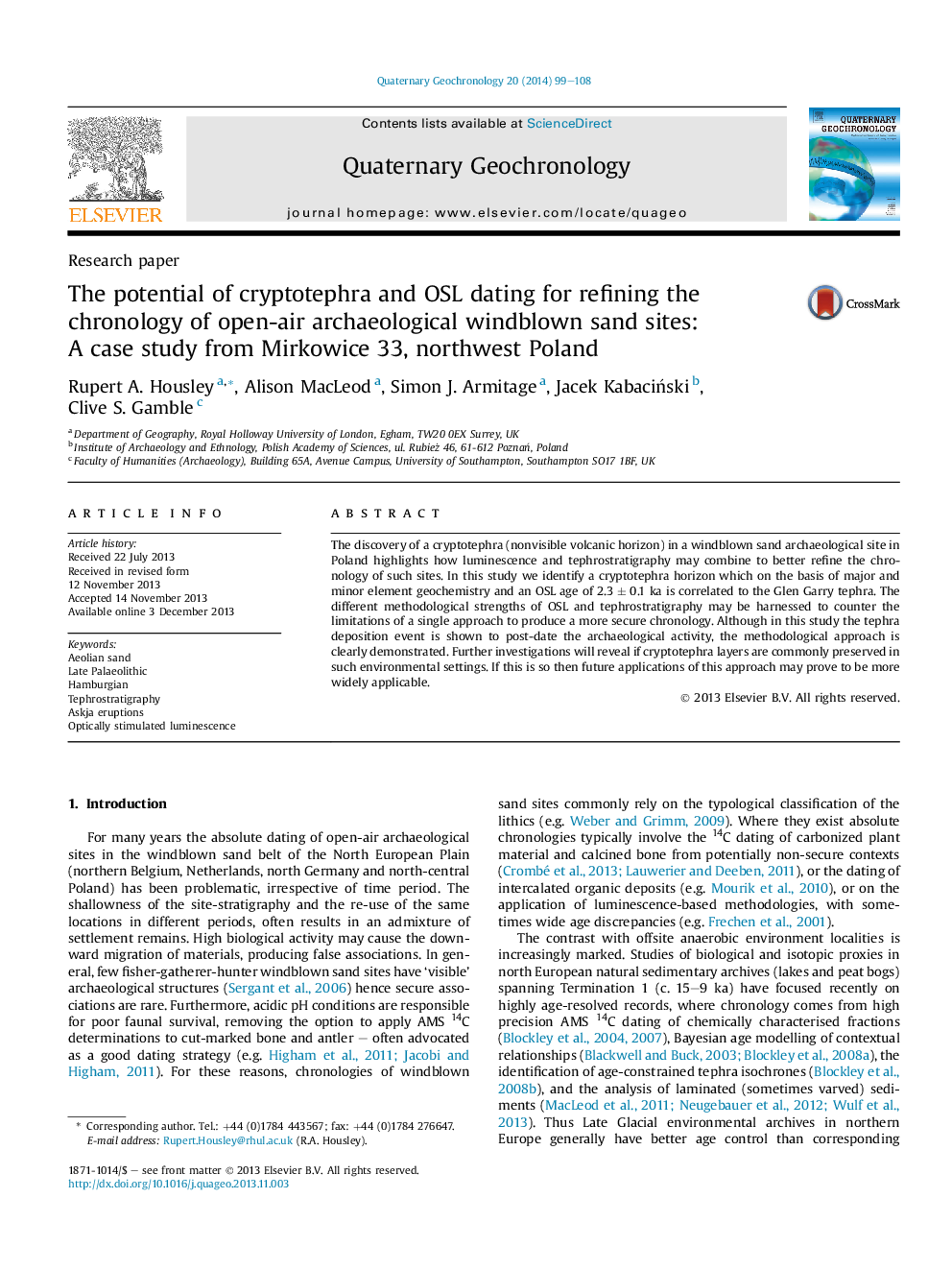| Article ID | Journal | Published Year | Pages | File Type |
|---|---|---|---|---|
| 4724989 | Quaternary Geochronology | 2014 | 10 Pages |
•Discovery of an identifiable non-visible cryptotephra in windblown sand.•Late Palaeolithic (Hamburgian) lithics artefacts present.•Tephra geochemistry is compatible with Askja volcanic centre.•Single grain OSL dating of sand indicates age of 2.3 ± 0.1 ka BP.•Suggests tephra is from ‘Glen Garry’ eruption (2.21 − 1.96 ka BP).
The discovery of a cryptotephra (nonvisible volcanic horizon) in a windblown sand archaeological site in Poland highlights how luminescence and tephrostratigraphy may combine to better refine the chronology of such sites. In this study we identify a cryptotephra horizon which on the basis of major and minor element geochemistry and an OSL age of 2.3 ± 0.1 ka is correlated to the Glen Garry tephra. The different methodological strengths of OSL and tephrostratigraphy may be harnessed to counter the limitations of a single approach to produce a more secure chronology. Although in this study the tephra deposition event is shown to post-date the archaeological activity, the methodological approach is clearly demonstrated. Further investigations will reveal if cryptotephra layers are commonly preserved in such environmental settings. If this is so then future applications of this approach may prove to be more widely applicable.
